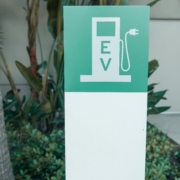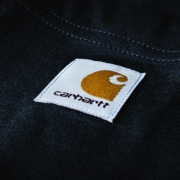Lately, there has been a lot of hand-wringing over the sales of EVs. EVs are not generating as much interest as expected. US automotive giants, except for Tesla, have backtracked on their EV plans, even going so far as to say that hybrids may in their futures, just like Toyota. Mercedes is pulling back, too. This is sad because late last year…Mercedes pledged to build 2500 charging stations in the US.
The Atlantic described the plight of EVs,
“Without the enormous sales they’d anticipated, carmakers have walked back hasty electrification proclamations and grown cagey about the inevitability of EVs. In December, GM CEO Mary Barra hedged on its goal of selling only EVs by 2035, saying that although the company still plans to meet that target, ‘we’re going to be responsive to where the customer is at.’ In the face of disappointing EV-truck enthusiasm, GM said it would build plug-in-hybrid versions of its top trucks, something the company had dismissed just over a year ago as a half-measure that would ‘dilute’ its mission to electrify. In December, Ford halved the 2024 production goal for its electric F-150 truck. The unease isn’t limited to the big car companies in Detroit. Mercedes pushed back its goal of 50 percent “electrified” sales, which includes hybrids, from 2025 to 2030.”
There are probably many reasons for this situation. Everyone involved in EV analysis has an opinion. For example, an online Harvard Business Review article blames the “technology-adoption life cycle.” This construct, first discussed by Everett Rogers in 1962, focuses on five different technology-adoption segments: innovators; early adopters; early majority; late majority and laggards. According to Mr. Rogers, the “gap” between early adopters and early majority is more like a chasm. This is because early majority people are not interested in being change-makers. Early majority people are more “pragmatic,” looking for improved existing pioneering products.
The online HBR author states that automakers, policymakers and others did not understand that early adopters want and need different things than early majority people. The author says assumptions about the future of EVs could be different if only automakers recognize, “…the differences between what early adopter and early majority individuals want.”
The writer’s research indicates that early majority individuals want “cars that have been tested by others” and cars “that make my life easier” and environmentally good, along with “ease of charging.” Take this to R&D!
And, so, herein lies the source of the EV-ownership obstacles.
It is popular to say that marketers should focus on customer wants. Therefore, ask people what they want. Please note, though: asking people what they want is a colossal waste of money, time and effort. People are not good at expressing what they want.
Asking people what they want is not as powerful as asking people what problems they have. Asking people what they want delivers generic information. Remember the words of Henry Ford: “If I asked people what they wanted, they would have said a better horse.” Instead, ask people what problems they have getting what they want. People know how to complain. Let people do what they know how to do.
Ask people to complain … to discuss problems… concerns… worries… ask people to kvetch about a specific product or service and you learn that people are not speculating or imagining. They are talking about real problems from actual experience.
And, the good news is humans love to complain. We are great at complaining. We are engineered to avoid painful, problematic situations. Humans are pain-avoidance mammals. Ask people to complain and you will receive all sorts of usable ideas. Give customers an opportunity to do what they love to do. Often the insightful, competitive edge will come from addressing or solving a problem, rather than just satisfying a want.
If only the automakers and policy makers thought to ask about problems, the forecasting about the immediate future of EVs would look a lot different. Stellantis, the Italian owner of Jeep, Ram and Dodge, just pledged to go ‘all in” with EVs contrary to GM and Ford. However, CEO Carlos Tavares told the press that Stellantis has figured out what US customers want. The reporting in The Wall Street Journal seems to indicate that Mr. Tavares’ optimism is based on manufacturing and cost cutting not solving customer problems.
Problem detection is the best way to identify what bothers individuals. Problem-solution is the best way to develop relevant differentiated brand-business promises. Problem Detection derives from psychological evidence that avoidance of pain – a problem – is a stronger motivator than the attainment of pleasure. Economic literature indicate that people tend to be risk-averse. We tend to pay more to avoid an unpleasant consequence than to attain a pleasant one.
A Problem Detection study begins with extensive problem lists generated by asking customers to complain. Then, respondents are asked to rate the problems on importance and frequency of occurring. The resulting data are analyzed into four groups:
- Problems that are very important and occur frequently;
- Problems that are very important but happen only occasionally;
- Problems that are not important but happen frequently; and
- Problems that are neither important nor frequently occurring.
Ask people to tell you their concerns, their problems, their worries. Then, figure out how to solve the most frequently occurring, most important problems. Problems in this first category should be high priority.
Why are US EV sales stalling? Because the US automakers are not solving potential customers’ problems. The US automakers seem to be guided by a belief that potential EV buyers want the “cool thing” or the “improved cool thing” rather than the real thing, when it comes to EVs.
Perhaps automotive companies are reluctant to conduct their own problem detection studies. Not to worry. Automakers can check in with J.D. Power. J.D. Power’s last survey of EVs (J.D. Power calls these cars BEVs – battery-operated EVs) point to insights into problematic issues. J.D. Power lists the following:
- Public charging isn’t just bad; it’s getting worse.
- Mass market BEVs deliver higher quality than premium BEVs: quality and reliability problems plague upscale BEVs. Probably due to the numerous installed software and other “premium” attributes.
- First-time BEV owners are less satisfied than BEV veterans: First-timers have high expectations based on the constant hype about the vehicles. First-timers are very concerned about range and the multiple issues with charging. First time owners are much more willing to consider a hybrid vehicle rather than an all-electric vehicle next time they purchase a car.
- The competitive landscape has altered: there are more hybrid options. Tesla is not the only competitor.
Or, you can Google numerous lists of detailed problems with EVs:
Batteries
There is a profusion of battery problems. Battery fires, battery disposal, toxic waste and lithium, which is also an environmental issue. In fact, a lithium “farm” scheduled by National Grid (the electric company) for the tiny Hamlet of Raquette Lake, NY, was cancelled due to residential environmental pushback and concern for the pristine Adirondack Park. Ironically, the EV, which is supposed to be the environmental answer for driving, has serious battery-building and battery-disposal environmental problems.
More battery problems focus on how the vehicles’ climate controls affect driving range. And, recently, owners in the Northeast and upper Midwest had problems when temperatures sank to new lows: EV batteries do not like and do not function well in the extreme cold. Cold also affects chargers. Residents in Chicago, IL noted issues with chargers as the temperatures dropped.
Range Anxiety
“Anxiety” issues are problematic. Just like your Pixel phone, a battery’s power declines with age. But, low battery anxiety issues are in a sea of other important, frequently occurring problems, including software glitches and factory delays. Range anxiety happens because of problems with batteries and charging. Automotive companies continue to blame customers when it comes to anxiety problems. Automotive companies are not tuned in to the actual source of anxiety: the EVs unsolved mileage problems and charging problems. These unsolved problems are the responsibility of the manufacturer, not the driver.
Not only are there long lines at charging stations, there is extreme complexity as not all vehicles can use the same charger. According to MENAFN, “There are about 30 companies controlling the 61,789 EV charging networks in the US. Each company has its own app. As a result, drivers could end up navigating multiple apps before they’re able to charge their owned or rented EV.” Frustration of this magnitude will lead to range anxiety.
Manufacturers’ heavy focus on “range anxiety” being a customer problem belies the serious problems that potential EV owners have when it comes to owning an EV. Besides, the way manufacturers describe range anxiety makes it seem as if there is a psychological problem with the potential owner, not the vehicle. Manufacturers have spent years putting the blame on the potential owner. Owners and prospective owners have concerns about range that manufacturers must fix. Range anxiety is not a psychological issue. It is an unsolved manufacturer quality issue. Manufacturers do not make friends by publicly stating that their customers have to relax, resolve their unease, apprehensions and angst.
Charging
Charging is an issue. Not just the time it takes to recharge the car, but the availability of places to recharge. For example, last summer, many potential drivers were turned off when AVIS’ lower price Budget rental brand-business, offered only EVs at the Albany, NY (New York State’s Capital) airport. Drivers were fully aware that there were very few charger stations in the area and scarcity in upstate New York. And, At Budget Rent a Car, people actually walked away from the Albany, NY Budget counter last summer rather than accept an EV.
The public is also aware of the malfunctions at charging stations. When Mercedes pledged to build a US charging station network, Mercedes said it was solving three huge EV problems: … 1) not finding a place to charge the car … 2) being stranded with a dead battery … and 3) “I’m fearful at charging stations in remote areas.” Mercedes solution will place its charging stations in secure… safe locations near luxury malls… not next to dumpsters.
in the US.
You can, as Wall Street Journal reporter Joanna Stern reports, install your own charging system at home. You might consider reading her story about the installation and the cost savings, post-installation investment.
Self-driving
Self-driving is a problem. Some of the press on self-driving is particularly frightening. But, the press reports reality. And, the reality is that potential customers believe self-driving needs lots of improvement before perceived as safe.
With Tesla sales languishing, Elon Musk sees self-driving as a profit center. As reported in The Wall Street Journal, “U.S. drivers whose vehicles are capable of running FSD will get a one-month free trial in the coming days, Musk said in a post on X late Monday. The system, a $12,000 upgrade of Tesla’s Autopilot technology, includes features that can navigate cars through city streets.”
Pricing
The only truly affordable EV was the Chevy Bolt, a vehicle discontinued after repeated battery fires. One of the serious problems in the EV category is the fact that, aside from Tesla, no manufacturer has figured out how to be profitable creating mass market vehicles.
Right now, US automakers are protected from China’s BYD’s Seagull. But, American auto executives are “kept up at night” by the prospect that Chinese automotive company, BYD, will somehow manage to make entry into the American car industry. BYD’s Seagull, a small, attractive, quality “EV for the Everyman” is priced at $6968. Right now, per Bloomberg Businessweek, tariffs and the government’s concern that Chinese vehicles will send data from connected vehicles back to China are fortifying the “no entry” to the US. However, if BYD builds a plant in Mexico, using the US-Mexico-Canada agreement, BYD could move vehicles into the US.
According to Sean McLain, a WSJ reporter, in the Tech News Briefing podcast from The Wall Steet Journal, the inability to create mass market vehicles is killing the smaller, EV startups like Lucid, Rivian and Fisker. Lordstown, Polestar and Nikola have already gone bust.
Mass market vehicles require profitable, high volume manufacturing. Mr. McLain points out that EV startups all focus on creating a high-end luxury car in the $60,000 to $100,000 price range. Without the Chevy Bolt, there is little choice in the mass market EV category. For example, Mr. McLain indicates that Lucid’s vehicle price starts at $60K but can be as high as $250K.
Additionally, Mr. McLain talks about the problems with Fisker’s Ocean crossover SUV. Fisker just recently indicated that it was probably headed for Chapter 11. The vehicle has a number of problems that must be addressed in order for a new generation of customers take up the EV mantle like the earliest adopters.
A Texas online magazine wrote:
“According to a report by TechCrunch, Fisker (FSR) Ocean owners have reported a wide variety of problems and issues with the car, such as Ocean’s suddenly losing power and brakes, key fobs that lock them in or out of their cars and front hoods unlatching and flying up at high speeds.
“In a customer complaint to Fisker, an Ocean owner complained that their SUV experienced a “battery system malfunction” that turned off the car while at a red light. Though the owner was able to restart the vehicle and drive away, the same error popped up again before it started to shake and shut off in the middle of the street which prompted a Fisker employee to state that the owner was ‘scared.’
“In another customer complaint, an Ocean owner complained of the same error popping up this time while driving on the infamous 405 freeway in Los Angeles. The owner reported that their car came to a stop on the left lane and partially blocked traffic. The owner got the car to drive again, but lost all confidence in the car; noting that they were “literally shivering” after the incident.
“’I COULD HAVE EASILY LOST MY LIFE,’ the customer wrote to Fisker.’”
Mr. McLain said that Fisker has two other serious problems that affect its viability as an EV competitor. Fisker’s vehicles arrive from a factory in Austria so first, there are long delays with vehicle arrivals. Second, because the Ocean is created overseas, the car does not qualify for the tax credits here in the US.
Which is another pricing problem. There is genuine confusion regarding tax credits. Most buyers find tax breaks perplexing when thinking about an EV purchase and the state and Federal qualifications for tax credits.
Stellantis believes its adaptable platform that can manufacture both gas-powered and EVs will be able to moderate price. However, European models are still priced at about US $25,000.
A problem-solution-focused approach is the most productive way to identify new development, product/service renovations and innovative marketing opportunities. Asking people to complain is more insightful than asking people what they want. Asking people to rate problems is more productive than asking people to rate benefits.
Asking people what they want will not provide R&D or marketing with productive information. Focus on problem-solution
This is not to say that problem-solution would have completely averted the sliding interest in EVs. However, problem-detection would have alerted the powers-that-be to the fact that there are many obstacles to EV ownership that have never been resolved to customers’ satisfaction, if resolved at all.
In its deep-dive into GE, Bloomberg Businessweek quotes Larry Culp, GE CEO. In describing the new culture at GE Aerospace. Mr. Culp says, “… a problem-solving culture is far more effective operationally than a finger-pointing culture.” US automakers must take note. Pointing fingers at customers is never an appropriate approach. Focusing on profit alone does not make for a viable future either. Making sure that the products manufactured and delivered are quality products that solve customer problems is a much better way to achieve enduring profitable growth.










